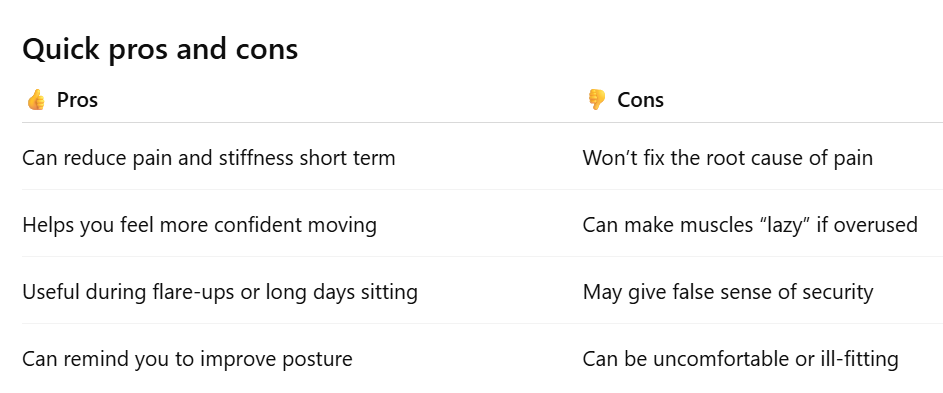Support Belts for Lower Back Pain: Do They Really Help?
Lower back pain is one of the most common problems we see at Body Zest. Whether it’s from long hours at a desk, lifting something awkwardly, or an old injury that’s flared up again - we all know how uncomfortable it can be.
One thing people often ask us is:
“Would a back support belt help my pain?”
Let’s take a look at what these belts do, when they can be helpful, and when they might do more harm than good.
What does a back support belt do?
A back support belt (also called a lumbar support belt) is a wide band that wraps around your lower back and stomach. Some are stretchy, some have firm supports, and most can be tightened using Velcro straps.
They’re designed to:
Give your back a bit of extra support when it’s sore or weak.
Limit movement that might aggravate an injury.
Help you feel more confident moving around when you’re in pain.
Remind you to keep better posture.
So in simple terms: a belt can make your back feel more stable - which can be really helpful when you’re in pain. But it won’t fix the underlying cause of that pain.
When can a back support belt help?
From what we see in clinic, belts can be useful when:
You’re having an acute flare-up of back pain and need extra support for a few days.
You’re sitting for long periods or doing manual work like lifting or gardening.
You want to move more confidently without worrying about hurting yourself.
You’re recovering from injury or surgery (but always check with your clinician first).
The key thing is to use the belt as temporary support - something that helps you keep moving while your body heals and strengthens.
The downsides of relying on a belt
While support belts can help in the short term, there are a few important downsides to keep in mind:
They don’t strengthen your muscles. If you wear one all the time, your body can start depending on it, which might actually make your back weaker over time.
They can give a false sense of security. It’s easy to think “I’ve got my belt on, I’m safe”, and then lift or twist more than you should.
They can be uncomfortable if they don’t fit properly - too tight and they dig in, too loose and they don’t do anything.
They don’t fix the root cause. Most back pain comes from stiffness, weak core muscles, poor posture or tight hips - not something a belt can solve.
How to use a belt wisely
If you do decide to try one, here’s how to get the most benefit:
✅ Use it occasionally, not all day, every day. For example, during a flare-up or when you know you’ll be sitting or lifting for long periods.
✅ Keep moving and stretching while you wear it - don’t use it as an excuse to stop your normal movement.
✅ Focus on strengthening your back and core muscles through gentle exercises. That’s what truly prevents future pain.
✅ Make sure it fits well. It should feel snug but not restrictive.
✅ Gradually wean off it as your pain improves and your body gets stronger.
What we recommend at Body Zest
At Body Zest, we see support belts as a tool, not a treatment.
They can definitely help reduce pain and give you confidence to move, especially during flare-ups, but they’re not a long-term fix.
If you want lasting relief, focus on:
Gentle movement and stretching
Core and hip strengthening
Better sitting and lifting posture
Staying active day to day
The belt should support you while you work on these things, not replace them.
Quick pros and cons
The bottom line
A support belt can be a handy tool to help you through a rough patch - but it’s not a magic fix.
If you’re thinking of trying one, chat to your osteopath or therapist first so they can help you choose the right type and show you how to use it safely.
At Body Zest, we help people with back pain every day. We’ll make sure you’re not just masking the problem - but actually building the strength and movement you need to keep your back healthy for the long run.
Need help with your back pain?
Book an appointment with our osteopaths at Body Zest in Banstead. we’ll assess what’s really causing your pain and help you find long-term relief.

